Todd Gitlin on ‘The Terror Dream’
Was the Bush administration's fevered response to 9/11 made easier by primal American myths of victimization and fear, as Susan Faludi argues in her provocative new book?
In her new book, “The Terror Dream: Fear and Fantasy in Post-9/11 America,” Susan Faludi squares three circles at once. She takes popular culture seriously but, for the most part, refuses to overload each and every scrap in our onrushing media torrent with unearned significance. She connects the spasm of understanding and misunderstanding that began on Sept. 11 with a deep strand of American history, yet without washing away the singularity and enormity of what happened on that grotesque day. Her third feat is this: Her third book, her most fluid and stylish, is also her most compressed.
To write well about catastrophes, especially catastrophes that — thanks to media immersion — “everybody knows,” requires a difficult hybrid of concentration, severity, delicacy, nearness and distance. I don’t know that anyone has yet got the imaginative measure of that terrifying day six years ago. Certainly our Tolstoy has not crawled out of the rubble. The closest we have, Don DeLillo, succeeded as an essayist-journalist (“In the Ruins of the Future: Reflections on Terror and Loss in the Shadow of September,” Harper’s, December 2001) but, to my mind, failed as a novelist (“Falling Man”). One reason, perhaps, is that the remembered emotion was instantly buried under a pile of cultural junk. (See under: Giuliani.) Faludi conducts an autopsy of the latter without indifference to the former. “The Terror Dream” is, among other things, a tract for the times against slovenly journalism, which is the means by which this culture decides not to think straight.
There was the trauma of Sept. 11 and there was the trauma that began that day. The first was the murderous work of 19 hijackers. The second began as a work of repair — I mean cultural repair, the sort that any society needs to make sense of breaches of decency — and turned into a cultural hijacking. This second hijacking began with a profound and unacknowledged sense of humiliation — precisely what was supposed to be a distinctly Muslim trait. Alongside a lot of grown-up resolve and plain decency in action, ancestral myths were reinvented — action heroes, “security moms.” There emerged a whole raft of artifacts that enshrined a certain image of the approved American way to respond — like a Hollywood montage called “The Spirit of America” that began and ended with images of John Wayne rescuing his little niece in John Ford’s 1956 Western “The Searchers.” Eventually, too, the trauma spawned a catastrophic war fought in the name of a hodgepodge of deceit and delusion.
“The enemy that hit us on September 11 was real,” Faludi writes. “But our citizenry wasn’t asked to confront a real enemy.” Out of terror, American culture howled its way back into a territory that looked familiar. “The arrest and prosecution of our antagonists seemed to be of only secondary concern. Instead, we were enlisted in a symbolic war at home, a war to repair and restore our national myth of invincibility.” From this myth, “we dreamed ourselves into a penny-dreadful plot that had little to do with the actual world in which we must live.” We dreamed ourselves back into it. The terror dream, it turned out, had been dreamed long before — centuries before — the event. Like boys building forts in the woods, we opted for cultural comfort. We sleepwalked into “homeland security” schemes that had as much to do with fantasy as with practical benefits. We entranced ourselves into a preventive war against a country that had nothing to do with the attacks. If you look at this mania in the eerie light of history, you can see that all this deceit and delusion was the work of a cultural Dracula dragging itself once more out of its shallow grave. History repeated itself behind our backs. Welcome to war against an Axis of Injuns to protect the honor of the wimmenfolk.
“Brokers, busboys, clerks, municipal workers, and military bureaucrats, not little girls, were the victims of the terrorist attacks. Why did we perceive an assault on the urban workplace as a threat to the domestic circle?” Faludi asks. “Why were we willing ourselves back onto a frontier where pigtailed damsels clutched rag dolls and prayed for a male avenger to return them to the home?” The answer is: a bad case of the historical oldies.
Like everyone else who treads these mythic territories, Faludi is indebted to the cultural historian Richard Slotkin, whose magnificent piece of Vietnam-era excavation, “Regeneration Through Violence” (1973), amply displayed centuries of American sagas obsessed with strutting hunters and kidnapped damsels. Faludi has also plunged deeply into the subsequent scholarship on captivity narratives. But I don’t know that she exactly answers this question of how a whole culture relaxes back into its cushions of myth. The dynamics of cultural transmission are mysterious in the best of circumstances. Is there really such a thing as cultural DNA? Why does stale history lumber back to its feet sometimes but not always? How do cultural myths ever get overturned, or swapped (which, at times, they do, at least partially)?
But by scavenging through the junk heap of American culture Faludi does illustrate how many and various were the fantasies piled onto the ruins of Sept. 11. Some of her tales are familiar but some are not. I didn’t realize until I read her book, for example, that Karen Hughes, now the keeper of our nation’s “public diplomacy” franchise at the State Department, but then George W. Bush’s trusted counselor in the White House, declared on CNN before a 2004 anti-abortion demonstration that American opposition to abortion was “really the fundamental difference between us and the terror network we fight.”
Faludi reminds us of another weird demonization pattern. Jerry Falwell, Pat Robertson, Bill Bennett, Ann Coulter and Camille Paglia agreed that (in Faludi’s words) “women’s liberation had ‘feminized’ our men and, in so doing, left the nation vulnerable to attack.” One might have thought that George Bush’s ascendancy should have, as it were, stiffened our resolve, but no. Apparently the manly mannerisms of Donald Rumsfeld did not emerge in time to stop Mohammad Atta, a man who seems to have been wigged out by women.
In the aftermath of the attacks, our rulers strutted and women needed not apply. Female writers were even more absent than usual from the Op-Ed pages. And isn’t it interesting that on the Sunday morning yackfests for seven weeks following Sept. 11, female appearances plunged by almost 40 percent, so that fewer than one in 10 of these anointed guests were women? “Shunning,” Faludi calls this, although it is surely at least as much a tribute to the assumption that wartime is time for warrior expertise, which tends to collect in the hands of men. Although the cause of women’s equality was momentarily chic (in Afghanistan), the actual war in Afghanistan swept it away. Culture stood still until the moment when the hapless and unwitting Jessica Lynch could be drafted, as if by a casting call, to fill the role of victim-heroine for our time.
Toward the end of “The Terror Dream,” Faludi asks whether, instead of burrowing into historical fantasy, we can “live with insecurity, finding accommodation with — even drawing strength from — an awareness of vulnerability.” Panic and paranoia on the one hand versus acceptance of insecurity on the other — these, she thinks, are the alternatives. I wonder, though indeed it is hard to state the tertium quid.
If she is right, I despair for our raw bipolar country, for the maturity she hopes for has never — at least never for long — been in the American vein. I also cringe at the political implications. Is the country ready for political leadership that takes terrorist dangers in stride? It surely wasn’t ready when John Kerry counseled that we think of the jihadis as something less than a mortal threat. If Hillary Clinton, say, were to promote a similar wisdom, Faludi would probably predict that she would be punished for breach of panic. Meanwhile, in the wings, the preachers of warrior destiny and embattlement await their next round of oblivious power.
Todd Gitlin is a professor of journalism and sociology at Columbia University and the author of 12 books, of which the most recent is the just-published “The Bulldozer and the Big Tent: Blind Republicans, Lame Democrats, and the Recovery of American Ideals” (Wiley).
Your support matters…Independent journalism is under threat and overshadowed by heavily funded mainstream media.
You can help level the playing field. Become a member.
Your tax-deductible contribution keeps us digging beneath the headlines to give you thought-provoking, investigative reporting and analysis that unearths what's really happening- without compromise.
Give today to support our courageous, independent journalists.

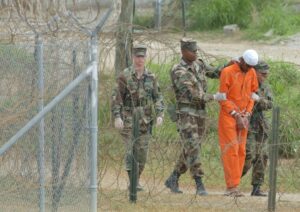
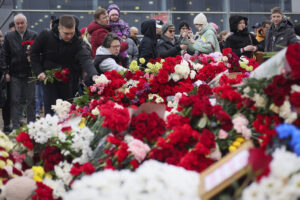
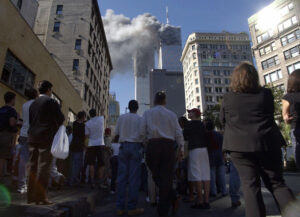
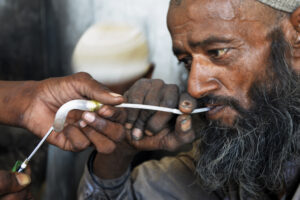
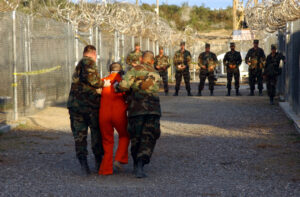
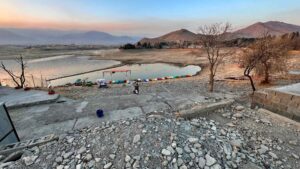
You need to be a supporter to comment.
There are currently no responses to this article.
Be the first to respond.